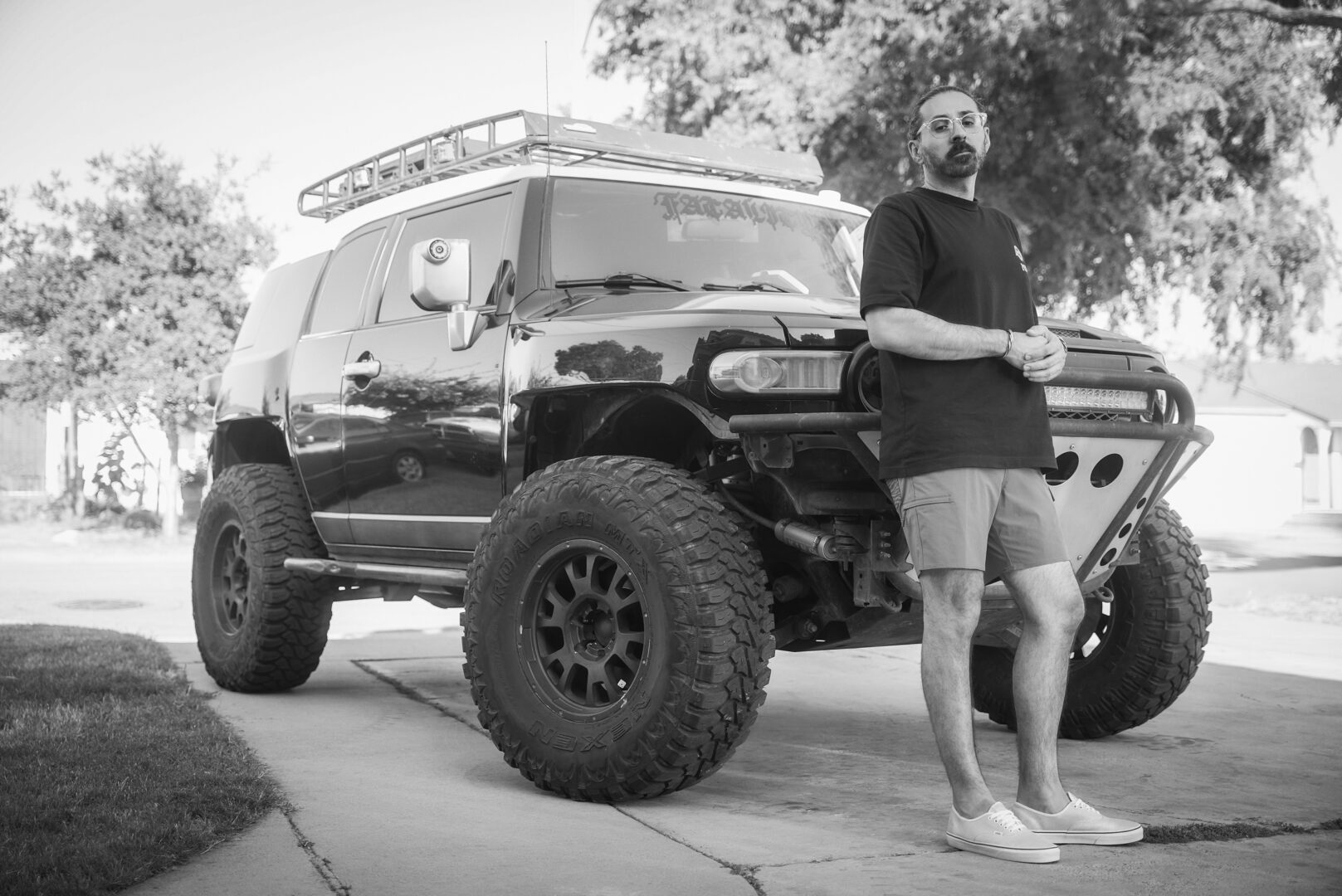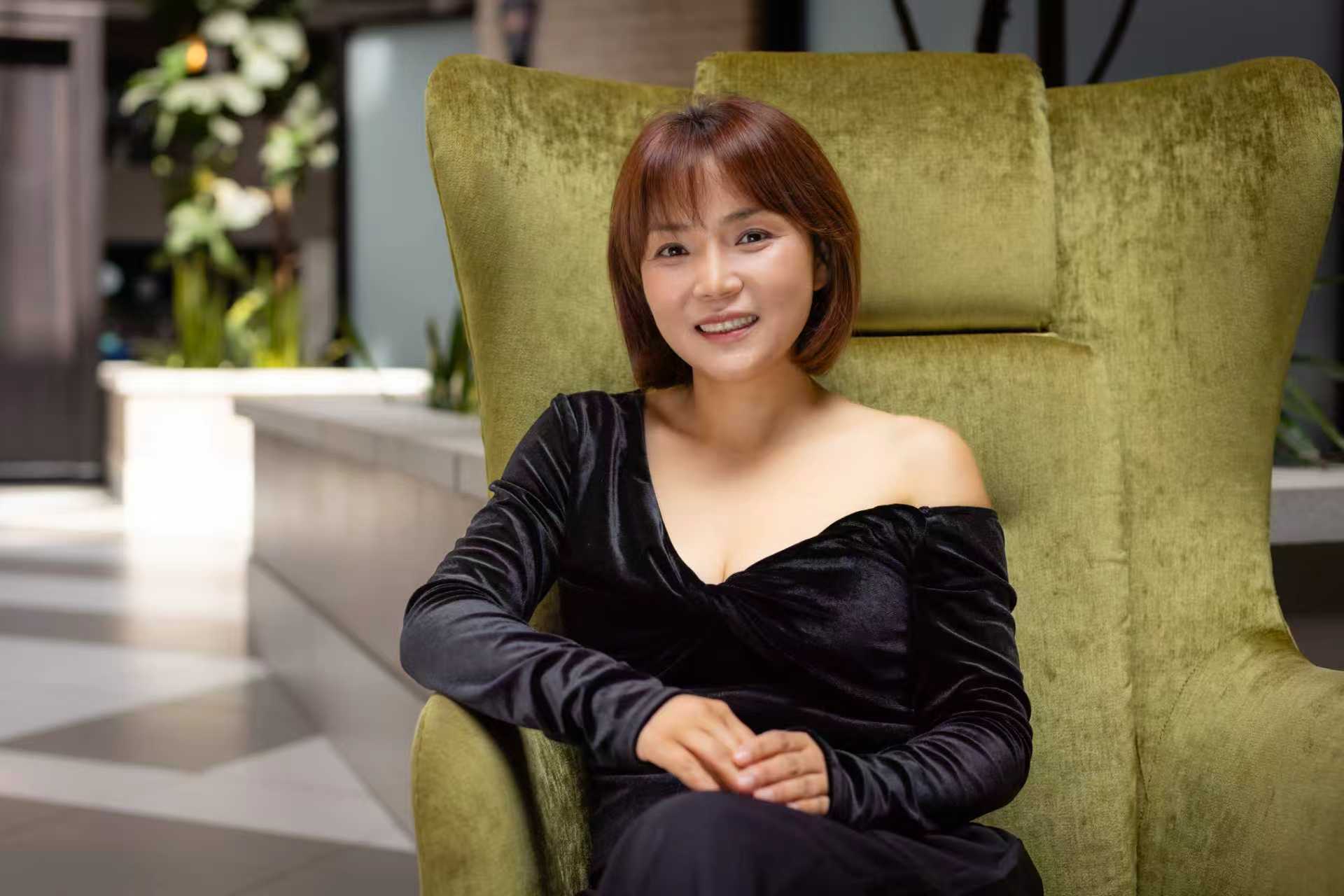We were lucky to catch up with Rob recently and have shared our conversation below.
Hi Rob, appreciate you sitting with us today to share your wisdom with our readers. So, let’s start with resilience – where do you get your resilience from?
Choosing just one of these areas without acknowledging the others feels incomplete; they’re all deeply connected. Resilience, work ethic, discipline, optimism, and creativity don’t operate in isolation. Each one supports the others, and together they create the foundation for a meaningful life and career. When one grows stronger, the rest tend to follow.
My resilience comes from everything and everyone around me: my mom, my culture, the city I’m from, the family I was born into, the family I’ve chosen, and most importantly, myself. I grew up watching people survive and push forward through tough circumstances. Losing jobs, experiencing death, and financial struggles, but they kept moving. That mindset was passed down to me: no matter what gets thrown at you, you keep going. It wasn’t a choice, it was a necessity.
Joining therapy a few years ago gave me language for a lot of the things I had already been living through: personal losses, identity shifts, heartbreak, and creative burnout. Therapy gave me new tools, but the foundation was always there. Resilience was instilled in me at a young age. It wasn’t about dismissing your pain; it was about gaining perspective. Yes, it can be a double-edged sword. Sometimes we invalidate our struggles by comparing them to someone else’s. But other times, it gives you exactly the grounding you need to shake it off and move forward. There’s power in being able to remind yourself, “This isn’t over.” I saw that in the people around me, especially my uncle Alfredo. He was resilient until the very end, and his fight became a reminder to adopt the “can’t stop, won’t stop” mentality.
That same spirit shows up in my work ethic. I grew up watching my family hustle constantly. My mom was constantly working and set the example that no one was going to hand you anything. My grandma worked in a furniture factory, then cleaned houses and babysat long after retirement, just to keep contributing. My uncle Alfredo had that entrepreneur spirit from the jump, going door to door with a lawnmower as a kid, eventually building successful businesses from scratch. I watched him land massive contracts with top-tier brands on Rodeo Drive: Chanel, Cartier, Van Cleef & Arpels, Dolce & Gabbana, and make it all happen without shortcuts or handouts, just grit and skill.
So when I got laid off from my corporate job, he knew I wasn’t going to look back. I went all in on myself. It’s been rough and still is, but walking away was never an option. I owe it to the people who believed in me before I believed in myself: my mom, grandma, and my uncle. And more than anything, I owe it to the younger version of me who kept dreaming, even when things felt impossible. I want to be someone he’d be proud of. I want to be the role model I didn’t have. I want to sit back one day and say, “We made it.”
Self-discipline has been just as essential. Early on, I realized I needed to take myself seriously if I wanted others to do the same. In college, good grades didn’t come easily. That meant showing up, staying up, asking questions, and doing the work. Which, in the beginning, wasn’t my cup of tea because school as a whole wasn’t my cup of tea. Later, I would come to find myself working with my uncle in low-voltage. I managed my schedule, so it was easy to slack off, but I knew the money, the progress, the reputation, it was all tied to showing up. Then came art school, which sharpened everything. I didn’t have unlimited time or money, so I couldn’t afford to waste a second. Graduating with honors from one of the hardest design programs on the West Coast was a direct result of that discipline. Mentors like Stinson drilled into us that “cool” wasn’t enough. Every choice had to be intentional. Everything needed a purpose. If something didn’t fit, you didn’t force it; you worked until it did. That mindset shaped how I move in every part of my life. Which brings me back to one of my favorite quotes: “How you do anything is how you do everything.”
Now, optimism, that’s a funny one. People think I’m naturally positive, but honestly, my optimism was born out of struggle. I’ve battled depression for years. I’ve lived in dark places and stayed there too long sometimes. It’s weird how pain can become a comfort zone. But at some point, I realized that no one was coming to save me. If I wanted change, I had to be the one to move. So I started training myself to believe that no matter how bad things get, they don’t stay that way forever. Even when nothing seems to be working, I try to stay focused, stay moving. That mindset doesn’t always fix the problem, but it gives me something to hold onto. Some people might call that manifesting, but it feels more like a tool for survival.
And when I’m in that headspace, that mix of hopeful and hungry, my creativity feels limitless. But staying creative without burning out? That’s a tightrope. I’ve learned that if I want to keep my creativity alive, I have to pull inspiration from places completely outside my work. If I’m deep into an automotive project, I’ll seek out something different: fashion, food, film, or even a trip to the desert or mountains with my closest friends. The contrast clears my head. A fashion shoot might inspire a new camera angle. A desert sunset might influence a golden hour edit. Creativity is a language, and the more dialects you speak, the more fluent you become.
Still, burnout is real. The constant demand to create is heavy. Some days I go from editing photos to mapping a brand strategy, completely different mindsets, same deadline pressure. It’s draining. And when I feel tapped out, I listen to that. Sometimes I stop taking on certain clients or pull back from certain types of work. I find other ways to express myself: cooking, working on my cars, or even just washing them, helps sometimes. Getting my hands on something else helps me process whatever I’m dealing with. It grounds me.
At the end of the day, we’re not machines. Yes, there are moments when everything clicks and we execute perfectly. But we have to honor the other side too, the fatigue, the doubt, the stillness. We have to be kind to ourselves, extend the same grace we give others. That’s the only way to keep going and keep creating for the long run.

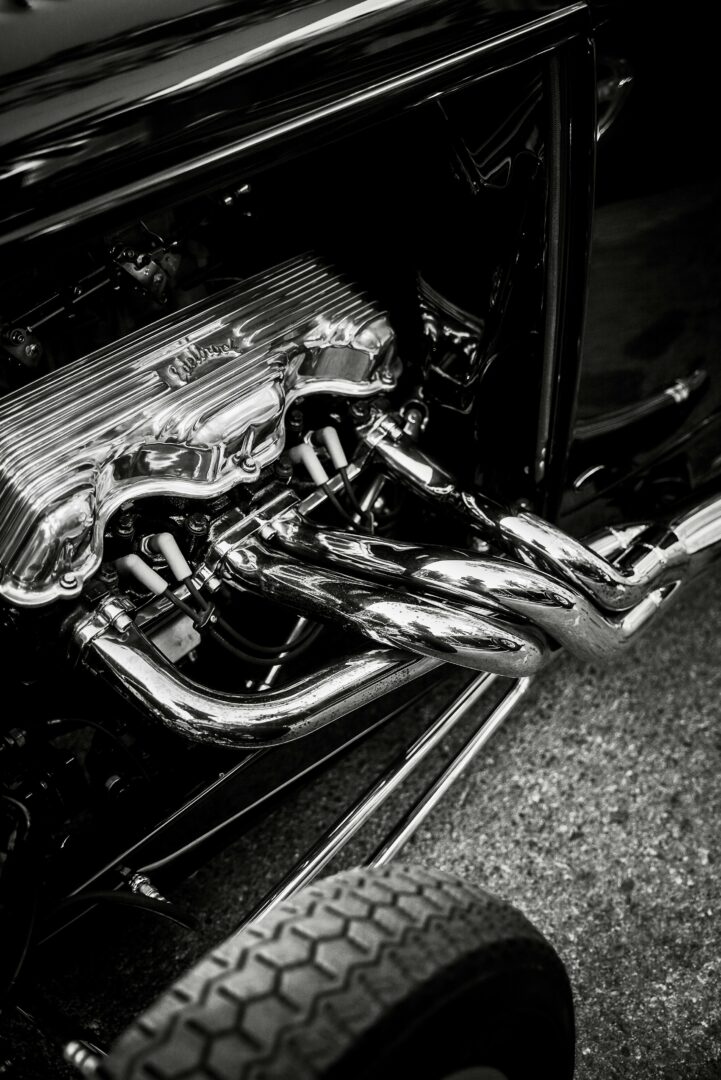
Let’s take a small detour – maybe you can share a bit about yourself before we dive back into some of the other questions we had for you?
The “what do you do?” question has always been the hardest for me to answer, not because I don’t know, but because I do so much. I’ve worn a lot of hats over the years, not because I wanted to be a jack of all trades, but because necessity taught me how to figure things out on my own. Growing up, if you didn’t have the money or access, you had to get creative and make it happen anyway. That mindset shaped the way I approach everything, with intention, curiosity, and the drive to solve problems from the inside out.
Professionally, I work across multiple creative disciplines. I build brands from the ground up, logos, type systems, packaging, merch, websites, and visual storytelling. I was fortunate to be mentored by individuals like Michael Stinson and Dan Marriner, who each poured into me in distinct ways. Michael taught me the anatomy of typography and the discipline of design, how every detail matters, down to the number of characters per line and the distinction between a font and a typeface. Dan guided me in understanding a brand’s story and how to bring it to life visually. With their guidance, combined with my understanding of storytelling through a lens, I’ve learned how to make people feel something with every frame, moment, and cut.
That’s what I’m focused on: telling stories with depth and intention, whether it’s through branding, photography, or my podcast, which has become a space for sharing conversations around mental health, personal growth, and the things that keep us grounded. I’ve always believed that creative work should feel like it belongs to people, not just the client or consumer, but to a larger community. That’s what excites me most: the connection. Art has helped me build relationships that have changed my life. The people I’ve met across fashion, automotive, hospitality, and beyond are reflections of the kind of energy I want to attract and the kind of creator I want to be.
Lately, I’ve been shifting my focus from client work (which has slowed down, not by choice, of course) into building something of my own: expanding my brand into something tactile, immersive, and rooted in the same level of care I give everyone else’s projects. After years of helping other brands build their merch lines, I’m finally launching one for myself. It’s been a long time coming. People have asked for it for years, and now I’m ready to offer something that reflects me: quality-first, intentional, and built to last.
I’ve spent the past few months sourcing the perfect materials for my photo prints, obsessing over paper weights, finishes, and textures. I’m working with a local printer who understands my vision. Prints will be available on stout resin-coated satin paper alongside a metallic paper that gives flake-heavy surfaces an almost 3D effect. These choices matter. I’m not drop-shipping. I’m not outsourcing to cut corners. Every print will be personally reviewed, signed, and stamped by me. That level of care pays homage to the lessons Michael taught about craftsmanship, process, and pride in your work.
Next up is a line of soft goods. I’m currently deep in the process of sourcing cuts and fabrics that do justice to the brand I’ve built. Dan and Lori Marriner, two of my most influential mentors, helped me understand that a T-shirt isn’t just a T-shirt. With the right attention to weight, stitching, ribbing, and silhouette, it becomes a statement piece. I’m bringing that same energy to the full collection. In addition to apparel, I’ll be releasing small-batch home goods and accessories: etched glassware, mirrors, vases, candle holders, ashtrays; items that aren’t just for your wardrobe, but for your everyday life. Things you’ll use, interact with, and hopefully find joy in. I want people to say, “Rob made that,” and feel a sense of pride and connection to it.
This shift into product and physical goods isn’t just a business move; it’s personal. It’s my way of answering a creative call I’ve felt for a long time. I’ve always looked for brands that could live in my space, on my body, in my kitchen, by my front door, and I didn’t find many that spoke to all of that. So I decided to build my own. If I don’t try now, I know I’ll regret it. So this is where I’m headed: a more immersive, intentional expansion of what I’ve always done, but this time, on my terms.
The new merch section of my site is in the works, and while it’s been time-consuming, it’s also been one of the most fulfilling parts of my journey so far. Everything is built from scratch, piece by piece, and curated with the same care I give every project. It’s a new chapter, but it feels like the natural next step in everything I’ve been building over the years.
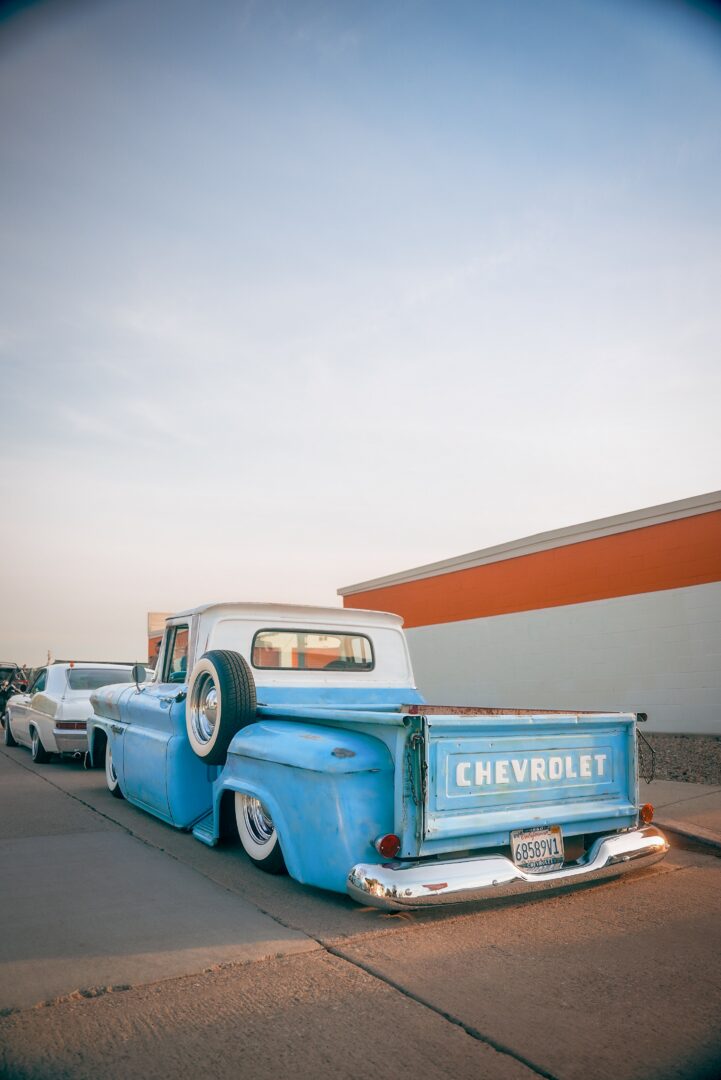
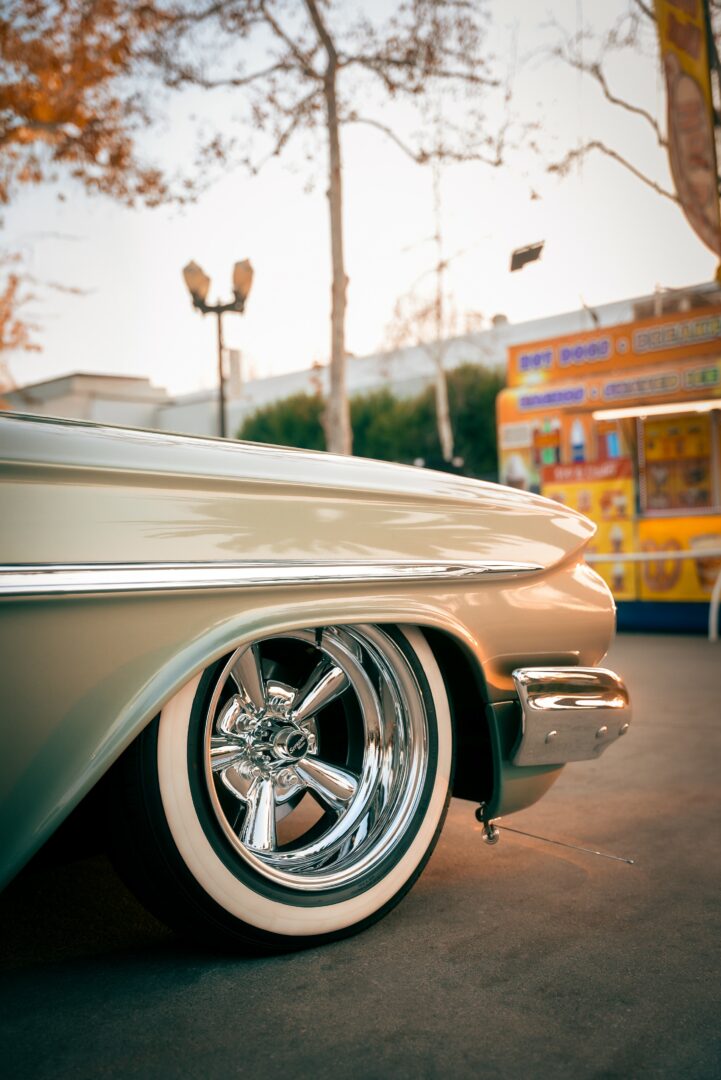
If you had to pick three qualities that are most important to develop, which three would you say matter most?
Looking back, the three most impactful things on my journey have been: learning when to let go (or, as they say, “kill your darlings”), having the tenacity to find alternatives, and the combination of passion and drive. And if I could sneak in a fourth, understanding my mental health has changed everything about how I approach both my personal and professional life.
Let’s start with “kill your darlings.” That phrase became a core memory for me during a design class with one of my professors, Catharin Eure. I was struggling to get a project to work, no matter how many times I revised it. I was stuck, frustrated, and couldn’t figure out why nothing was clicking. She sat down with me, went through everything I had, and said something that stopped me in my tracks: “You know what you have to do, right? You have to kill your darling.”
What she meant was: let it go. Scrap it. Even if you’ve poured hours into something, if it’s not working, it’s time to start fresh. And the moment I did, everything finally clicked. The new version of that project ended up being one of the strongest pieces I produced that semester. But what stuck with me more than the result was the lesson: that concept applies to life just as much as design. We stay in relationships, jobs, routines, even mentalities, long after we’ve outgrown them, just because we’ve “put too much time in.” But if you’re brave enough to let go, you give yourself room to breathe and create something better. Sometimes walking away is the act of love for yourself, and for whatever it is you’re meant to do next.
The second quality is tenacity, specifically, the kind that makes you dig deep and find alternatives. This industry isn’t stable. One day, you’re working at a company with full benefits and a 401(k), and the next, you’re in a surprise meeting where they pull the rug out from under you. Access revoked, your name has been wiped from the system, and a box will be shipped to return your gear as if it never happened. In those moments, you have a choice: spiral or pivot. You pick up the pieces, rebuild your portfolio, knock on every door, and remind yourself that you’re more than a job title. That same mindset applies in creative work as well. You hit walls. You get stuck. But if you have the tenacity to explore paths that weren’t on your radar. Dig through the archives, revisit old ideas, pull inspiration from random places because you find the gold where no one else was looking.
It takes guts to explore the alternatives. We’re often taught that there’s one right way to do things, but that tunnel vision can crush creativity. So I always tell people: look under the rug, behind the doors, in places you’d never think to check. The answers are usually right there, just outside your comfort zone.
The third key is the mix of passion and drive. Passion is loving what you do. Drive is staying committed even when it’s hard, even when you’re tired, uncertain, or uninspired. I was reminded of this recently in a conversation with a friend. I was venting about how exhausting it can be to edit photos for hours, post work online, and still not feel like it translates to more opportunities. But even on the worst days, I find myself opening Lightroom or tinkering with an edit. He told me, “That’s your drive, you keep going, even when it doesn’t make sense.” And he was right. The passion keeps the spark alive, but the drive keeps the engine running.
That combo is something I’m incredibly grateful to have, and I think every creative needs to develop both. You can love your craft, but if you don’t show up for it consistently, that love fizzles. On the flip side, you can be the hardest worker in the room, but if your heart’s not in it, what’s the point? My passion has lived in design since I was a kid: typography, layouts, color theory, it’s always fascinated me. My drive keeps me evolving, keeps me learning, and keeps me grounded through the tough moments.
And if I can throw in one bonus skill, it’s prioritizing your mental health. Therapy changed everything for me. It gave me tools I didn’t even know I needed. I’ve spent the past few years digging deep: reading, researching, working with professionals, and exploring the parts of myself that used to scare me. And I say this all the time, if your emotions affect your work (which they do), then your mental state can become one of your biggest creative blocks.
We glamorize the idea of “pushing through,” but sometimes the strongest move is admitting you need help. It’s okay not to have it all figured out. It’s okay to hand the baton off for a little while, to sit with your feelings, to regroup. It’s wild how you can be surrounded by people, even sleep next to someone every night, and still feel alone. But if you do the inner work and face those feelings instead of avoiding them, that’s where the real shift begins. That’s where the healing starts.
But, I have a word of advice on top of what we already discussed: Learn to listen. Hone that skill like your life depends on it, because as a creative, it does. You’ll spend more time interpreting emotions, briefs, and abstract ideas than you will pushing pixels. And confidence, real, rooted confidence, is everything. The people you admire, the ones “making it,” often got there because they believed in themselves when no one else did. Learn the rules of your craft, then learn how to break them. Understand the structure so you can reassemble it in your voice, like kintsugi, the Japanese art of repairing broken pottery with precious metals like gold or silver. You’re not trying to hide the cracks. You’re honoring them and making something stronger, more beautiful, and more yours in the process.
That’s what being an artist is. It’s about stretching yourself so far outside your comfort zone that you almost forget where you started, but then using all your tools, all your heart, to build something new exactly where you stand. Confidence, self-awareness, and respect for the craft will carry you through. Strengthen your foundation, and everything else will follow.
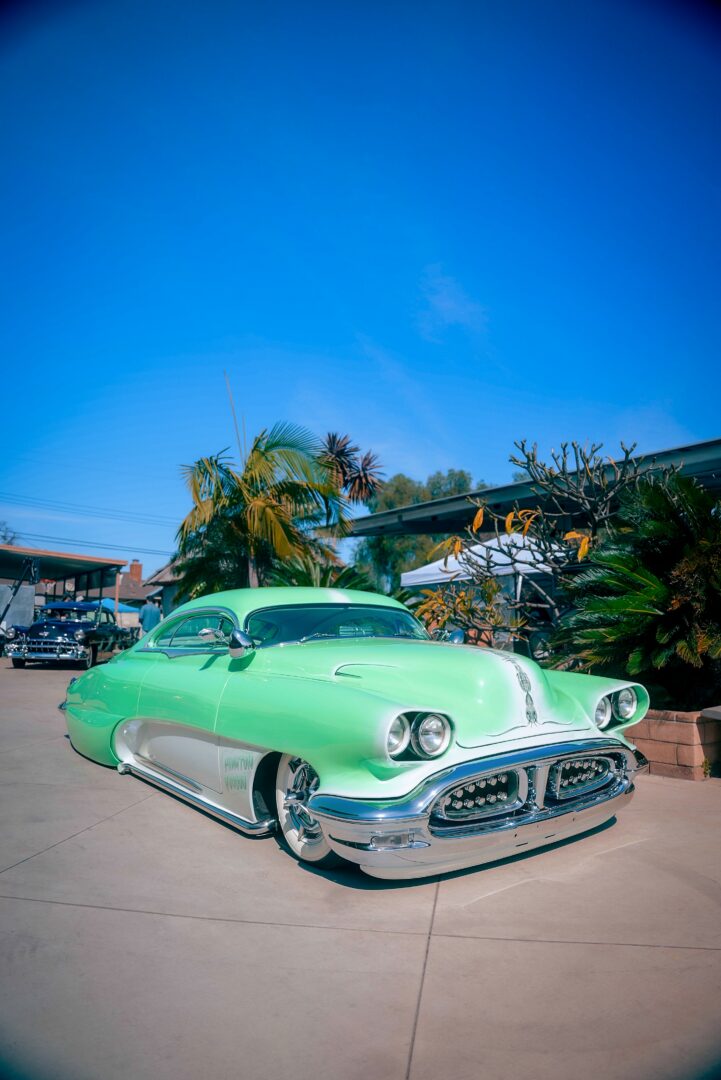
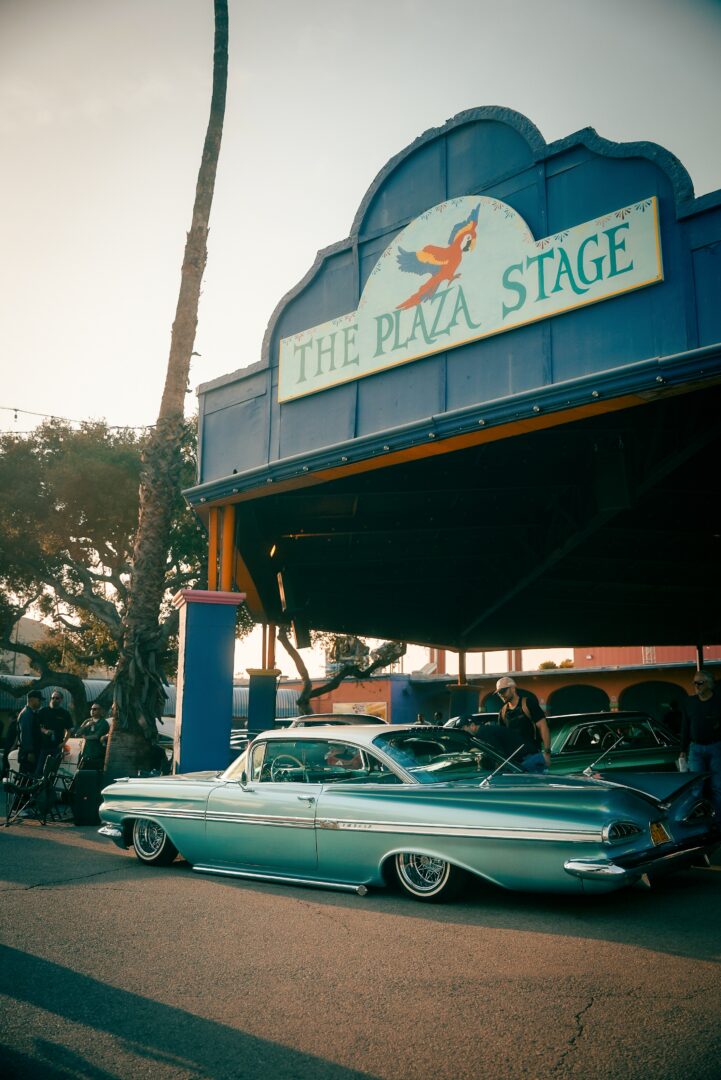
Is there a particular challenge you are currently facing?
Right now, the biggest challenge I’m facing comes down to two things: getting exposure to convert into paid client work, and simply, making money as a creative. Social media is both one of the greatest tools ever invented and the bane of my existence. Just when you think you’ve figured out the algorithm, it changes on you. You’re constantly chasing this invisible system with something very real: your work. You can’t oversaturate hashtags, can’t post too much, but if you don’t post enough, you’re invisible. You have to time your content, understand your audience, create your world inside the app, and hope it all clicks. It can be exhausting.
But that’s where tenacity, passion, and drive come in. I was doing this work long before these apps existed, and I’ll keep doing it whether they push my content or not. I’ve grown more comfortable sharing my work online, and I’m grateful because it’s brought me opportunities like this one. I never thought I’d be featured in magazines for my story and career, and now, here we are. That reminder keeps me fueled.
Still, converting exposure into actual paid work? That’s the hard part. I post regularly, share stories, reshare tagged content, and stay active with my audience. I’ve been fortunate to work with big names like Nexen Tire, Tropical Glitz, Airlift Performance, and more. But even with that kind of visibility, people often don’t want to pay for professional photography. They’ll tell me they love my aesthetic, the way I shoot, my editing style, and then look for someone to do it for free.
It’s wild to me that in 2025, creative work is still undervalued. You’ll see someone drop $20,000 on a paint job but hesitate to spend a fraction of that to have it photographed properly. And the truth is, I’ve worked for years to build this skillset. I’m constantly learning, evolving, and adapting, and I know what I bring to the table. When I start to question my worth, I remember that bending for people who don’t see your value only waters you down. You’ve got to stand firm, even when it’s tough. Because the right clients do come along. The ones who say, “Whatever it costs, I want you to do it,” because they trust your vision.
As creatives, we’re not supposed to appeal to everyone. We’re an acquired taste, and that’s the point. You want the right clients. You want to attract the people who get it. And just like Larry Chen or Paula Scher didn’t get to where they are through luck, I know that growth takes work, discipline, and self-belief.
The second half of the challenge is navigating how to make money as a creative in general. No shade to anyone using Canva or similar tools, but there’s a clear difference between that and someone who’s formally trained and deeply rooted in the craft. You see it in the process, in the details, in the execution. Still, I constantly hear: “Can you do it cheaper?” Or, “Another designer quoted me less, can you match it?” Early in my career, I might’ve caved. But now? That’s not where I’m at anymore.
I’m not claiming to know everything, far from it. But I know what I’ve learned. You came to me because you recognized that, and it’s not fair to ask me to shrink my work to fit a budget that doesn’t value it. And yes, I’m emotional. Yes, I’m connected to what I do. But that doesn’t mean I should question myself just because someone else doesn’t see my worth.
So, what am I doing about it?
I’m pivoting. I’m building out the merchandise side of my brand. I’m creating physical pieces that reflect the same attention to detail and care I put into everything I do because the traditional freelance or agency model isn’t cutting it anymore. In school, we were told there were two ways to make money as a designer: get a job or freelance. But that’s just not true anymore. There are other ways, but they just weren’t part of the curriculum.
This is my way forward: bringing my work into the physical world. I want people to experience the brand in a tactile, immersive way. Maybe it’s a photo print they hang in their living room. Maybe it’s a piece of etched glassware or a garment that becomes their favorite go-to. I want someone to feel something when they hold it. Michael used to talk about that: the power of holding something in your hands and knowing it was made with love, care, and intention. That matters to me.
So yeah, I’m shaken by it all. But I’m doing it anyway. I’m putting myself out there in a new way. Offering people a chance to invest in me, not just my services. Maybe someone’s dad hangs a print on their wall, and years later, that same photo hangs in their kid’s home as a reminder of where it all started. Maybe I give a niece or nephew a piece of merch, and later they become an artist themselves. Who knows?
What I do know is this: I’m betting on myself. Fully, unapologetically, and for the first time in a long time, with confidence. Things were getting stagnant, and I needed to shake it up. This is me doing that.
Contact Info:
- Website: https://www.robmadeit.com/
- Instagram: https://www.instagram.com/robthisbaus/
- Facebook: https://www.facebook.com/robthisbaus/
- Linkedin: https://www.linkedin.com/in/robert-carmona-13705b127/
- Youtube: https://www.youtube.com/@robthisbaus

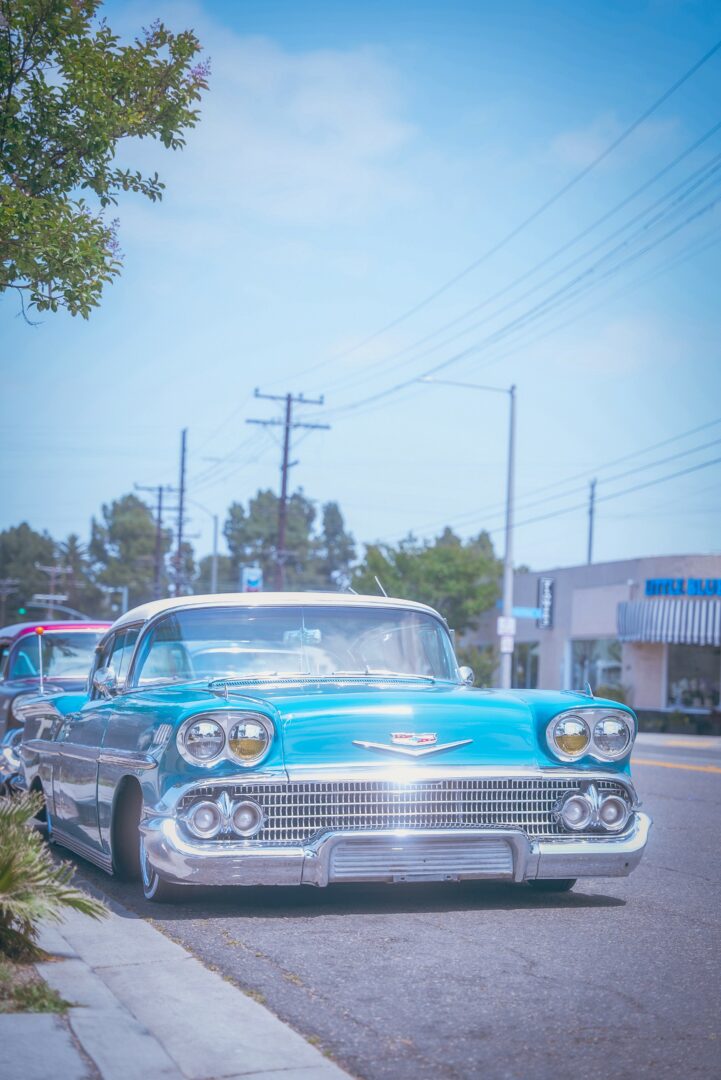
Image Credits
Rob Carmona
so if you or someone you know deserves recognition please let us know here.

